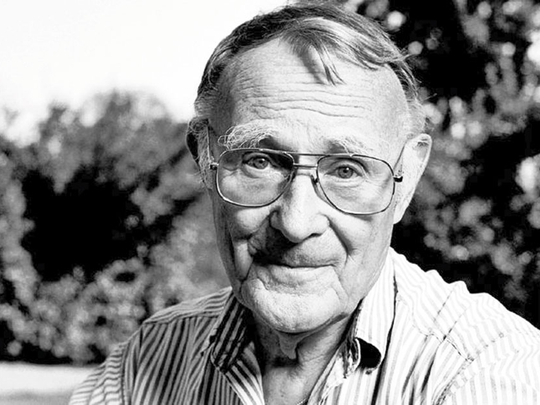
Ingvar Kamprad, 91, passed away last week. The frugal billionaire was known for buying his clothes from flea markets, flying budget airlines and driving in a 15-year-old Volvo. But most importantly, he single-handedly established flat-pack culture, empowered young people with starter-home must-haves and rebranded (for better or worse) Scandinavian chic.
Kamprad was 17 when he founded Ikea in 1943. The name came from his initials, IK, with an E for Elmtaryd, the family farm where he grew up, and an A for Agunnaryd, his village. In his early years, Kamprad sold matchboxes to neighbours from his bicycle. He went on to sell Christmas tree decorations, seeds, and ballpoint pens and pencils.
In the 40s and 50s, he sold products mostly by mail order, and when he received positive feedback on furniture produced by local manufacturers, he decided to focus exclusively on low-priced furniture. ‘Flat-pack’ was born when he tried delivering his products in his car.
Over his lifetime, he built Ikea into the world’s largest and most influential furniture retailer, with sales of around €36 billion (Dh163.83 billion) in 2016 through stores in 49 countries. Recognising a generational shift in consumerism, Kamprad stepped down from the company’s board in 2013; as his three sons took charge, Marcus Engman was appointed to head design. Last year, Ikea revealed some pivotal projects that not only set up the brand to face the future, but also cement Kamprad’s legacy.
FOR FURRY FRIENDS
Inma Bermudéz introduced Ikea’s first furniture collection designed specifically for pets. The Lurvig collection fills the market gap for reasonably priced but nice-looking pet products, and includes a treehouse for a cat and a dog bowl for fast eaters. The Valencia-based designer worked alongside vet Barbara Schäfer to ensure her offerings took into account the different needs and habits of our four-legged family. From a ‘friendly-smelling bed’ designed to be filled with owner’s old clothes and blankets and a bed frame can be used as a cosy nook or turned upside down as a kennel, to cocooning shelves — the 62-piece collection covers the basic areas of sleep, eat, play, travel and walk. Ikea was also one of the brands named in PETA’s first Vegan Homeware Awards, which recognise the best cruelty-free designs for the home.
IKEA X Hay
Founded in 2002 with a self-inflicted manifesto to create contemporary furniture with an eye for modern living and sophisticated industrial manufacturing, Denmark-born Hay has fast risen to be one of the most coveted Scandinavian design brands. Their collaboration with Ikea, the 30 piece Ypperlig collection challenges general perception of Ikea quality and design. It also allowed designer duo Rolf and Mette Hay to evolve their understanding of the supply chain models and creating covet worthy design within a flat-pack model The result is a robust collection of furniture and small accessories that stand apart for their simplicity.
SUSTAINABLY STRONG
For last year’s London Design Festival, Ikea’s innovation lab Space10 created a pop-up farm at Protein Studios in Shoreditch. Throughout the festival, the pop-up used water (instead of soil) and artificial lighting to grow tiny greens that powered 2,000 nutritional salads. The project that aimed to provide a space-saving and sustainable way for people to grow their own food is the latest in Ikea’s support of innovation that can deliver a human-centric, eco-conscious future. Hailed by design critic Alice Rawsthorn as ‘one of the most important design developments of the past decade’, their flat-pack refugee shelter was first introduced in 2014. In 2017, the award-winning project was recalled for re-design amid concerns over a range of design issues including accessibility and fire risk.
INTO THE FUTURE
2017 saw the brand come to terms with the potential of the www as it introduced intuitive, smart products. It teamed up with Apple to develop at Augmented Reality platform that helps customers to visualise what products will look like in their own homes, before purchasing. After the successful launch of wireless phone charging products, Ikea Home Smart programme debuted the Tradfri range. Building the brand’s smart functionality cred, the new range comprises of bulbs, LED panels and cabinet doors that can be controlled using a remote or app. Trådfri is a plug-and-play solution targeted at consumers who want a smart environment minus the complexity.








